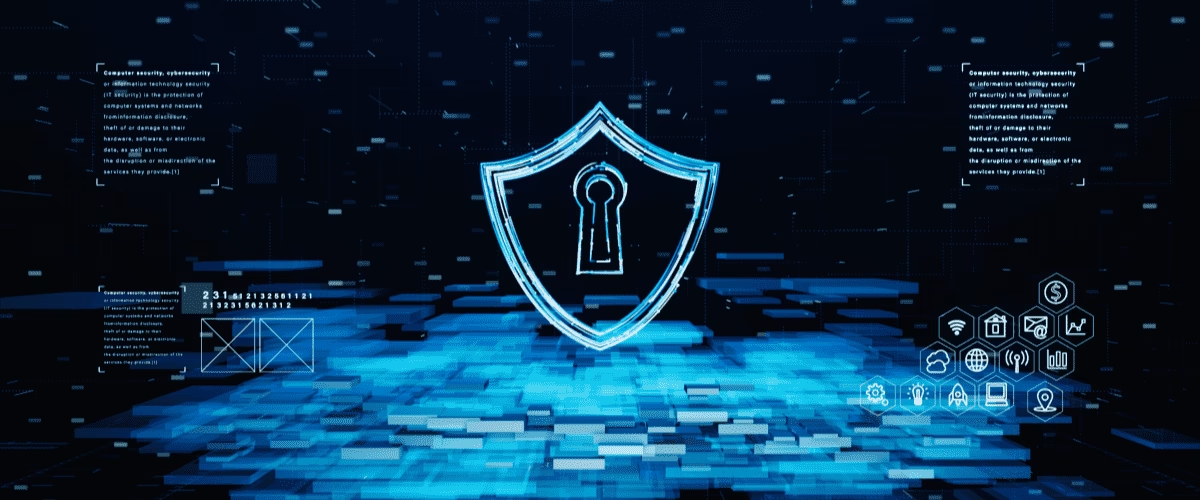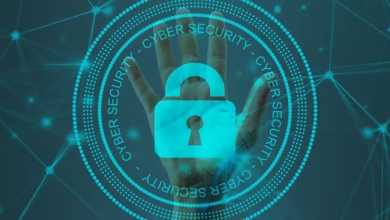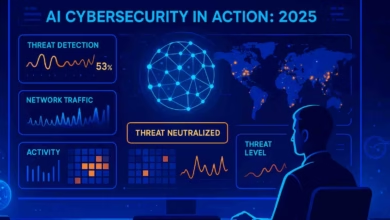Resilient by Design- How Companies Overcome Cyber Attacks in the AI Era

I’m sharing my insights as a contributor to BytesWall. I’ve seen how AI has become central to digital transformation, helping businesses work faster and smarter. But with great power comes great responsibility—AI also introduces new cybersecurity threats that are tougher than ever. In this article, I’ll walk you through how companies are stepping up with AI-enhanced security strategies, focusing on proactive threat detection, rapid incident response, and resilient system design. We’ll look at real examples, ethical challenges, and what’s coming next in this evolving field. Join me as we explore how businesses are becoming resilient by design in the AI era!
The Double-Edged Sword: AI in Cybersecurity
The digital era, increasingly driven by artificial intelligence, has transformed business operations. However, this evolution has also given rise to more intelligent and dynamic cyber threats. Traditional cybersecurity approaches are no longer adequate in combating adversaries who now use AI to automate and scale attacks. As a result, organizations must shift from reactive postures to proactive, AI-driven resilience strategies.
AI is like a double-edged sword—it’s a powerful tool for companies, but it’s also being used by hackers to create smarter attacks. Let’s take a closer look at the new threats AI has brought into the cybersecurity world.
The Emerging Threat Landscape in the AI Era
AI has introduced both enhanced protection and new attack vectors. Key challenges include:
- AI-Generated Phishing: Sophisticated generative models allow attackers to craft convincing phishing emails tailored to specific users, making them harder to detect.
- Adversarial Machine Learning: Malicious actors manipulate AI models by feeding them specially crafted inputs to deceive and bypass security checks.
- Data Poisoning Attacks: Attackers corrupt training datasets to degrade the performance of machine learning models, effectively sabotaging automated defenses.
- Increased Attack Surface: Cloud services, IoT devices, and AI model APIs create more entry points, demanding continuous monitoring and adaptive defenses.
These threats require companies to invest in technologies and frameworks that support real-time response, contextual analysis, and predictive defense. Let’s see how AI is helping businesses fight back.

A diagram showing how AI helps companies defend against cyber attacks, with strategies like anomaly detection, threat intelligence, and automated responses.
AI-Powered Cyber Defense: Breaking It Down
The diagram above gives us a glimpse of how AI is becoming a critical line of defense for companies. Organizations now employ AI not just as a technology function but as a critical line of defense. The following use cases highlight AI’s role in securing digital infrastructures:
Anomaly Detection
Machine learning models analyze user behavior and network traffic to detect irregularities, flagging potential threats early.
Natural Language Processing (NLP) for Threat Intelligence
NLP tools sift through open-source intelligence (OSINT), including news, blogs, and dark web forums, to identify emerging threats.
Automated Incident Response (SOAR)
Security Orchestration, Automation, and Response platforms use AI to automate workflows, contain threats, and reduce manual intervention.
Fraud Detection
AI continuously evaluates transactions in financial institutions to detect anomalies, protecting users from real-time fraud.
These capabilities allow enterprises to scale their security operations while reducing the dwell time of active threats. But defense isn’t just about stopping attacks—it’s about being prepared for them. Let’s explore how companies are building resilience.
Building Resilience: Strategies to Stay Strong
Modern cyber resilience goes beyond prevention to encompass preparedness, detection, response, and recovery. Key organizational strategies include:
- Zero Trust Architecture (ZTA): This security model assumes no implicit trust. Every access request is verified continuously, ensuring robust access control.
- AI-Driven Red Teaming and Simulations: Organizations use AI to simulate attacks and test system vulnerabilities, enabling proactive mitigation.
- Cybersecurity Training with AI Focus: Educating staff about AI-generated threats, such as deepfakes and social engineering, strengthens the human firewall.
- Integrated Risk Management: Businesses align cybersecurity with enterprise risk strategies, incorporating AI to assess and prioritize risks.
These frameworks collectively ensure that companies not only survive cyber attacks but continue to operate with minimal disruption. Let’s see how these strategies are being applied in the real world.
Industry Case Studies: Real-World Examples of AI in Action
Real-world examples underscore how companies are overcoming cyber threats using AI:
Banking and Finance: JPMorgan Chase’s AI tool, COiN, automates contract review and fraud detection. Similarly, HSBC uses AI for real-time transaction monitoring to detect financial crime.
Healthcare: Hospitals like Mayo Clinic use AI to detect anomalies in data flow that might indicate ransomware activity, quickly isolating systems to limit damage.
Technology Sector: Google’s Chronicle security platform integrates AI for scalable threat detection, while Microsoft uses machine learning to detect password spray and credential-stuffing attacks.
These cases reflect a shift toward proactive defense and quick recovery mechanisms driven by AI capabilities.
Ethical and Regulatory Considerations: Doing AI Right
As AI becomes embedded in cybersecurity, it raises ethical and compliance-related challenges:
- Transparency and Explainability: AI systems used in cybersecurity must be interpretable. Black-box decision-making may result in false positives or missed threats.
- Bias in AI Models: Security AI must be trained on diverse datasets to avoid bias, which could disproportionately affect users or systems.
- Regulatory Compliance: Organizations must adhere to frameworks such as the EU’s AI Act, NIS2 Directive, and GDPR, ensuring responsible AI usage and data protection.
- Accountability: Automated decision-making must be auditable. Companies must establish protocols for validating AI model outcomes and mitigating errors.
These factors are crucial for building trust and ensuring long-term viability of AI-powered security solutions.
Why Should You Care About AI in Cybersecurity?
As someone who uses technology every day, you might wonder why this matters to you. Here’s why AI in cybersecurity is important for everyone in 2025:
- Your Money Stays Safe: AI helps banks like JPMorgan Chase and HSBC stop fraud, protecting your savings from hackers trying to steal through fake transactions.
- Your Health Data Is Protected: Hospitals like Mayo Clinic use AI to guard your medical records, ensuring hackers can’t lock them with ransomware or misuse your personal info.
- Your Online Activities Are Secure: Whether you’re browsing or shopping, AI helps companies like Google and Microsoft stop attacks like password theft, keeping your accounts safe.
- Your Privacy Is Guarded: AI ensures companies follow laws like GDPR, so your personal data—like your name or address—isn’t misused or shared without your permission.
- Your Devices Stay Safe: From your laptop to your smart home devices, AI protects the tech you use, stopping hackers from taking control or spying on you.
AI in cybersecurity isn’t just for businesses—it’s about keeping your digital life safe and secure, so you can use technology with peace of mind.
Looking Ahead: The Future of AI in Cybersecurity
The intersection of AI and cybersecurity is poised for significant evolution. Anticipated developments include:
- Explainable AI (XAI): Future AI systems will prioritize interpretability, allowing security teams to understand and act on model insights with confidence.
- Human-AI Teaming: AI will augment human decision-making rather than replace it, ensuring both speed and judgment in incident response.
- AI-Driven Threat Forecasting: Predictive analytics will anticipate attack vectors based on behavioral, contextual, and geopolitical data.
- Decentralized Security Models: With AI, companies will develop decentralized, autonomous security agents to protect distributed infrastructures.
Recommendations:
- Integrate AI with threat intelligence for real-time situational awareness.
- Conduct regular audits of AI security systems for bias and effectiveness.
- Train employees to identify and respond to AI-generated threats.
- Collaborate with regulatory bodies to ensure alignment with ethical standards.
These measures will future-proof enterprise security strategies while aligning innovation with responsibility.
Final Thoughts: A Resilient Future with AI
The AI era brings both unprecedented opportunity and new cybersecurity challenges. As threats become more automated, dynamic, and targeted, organizations are stepping up with AI-driven strategies to stay resilient. From detecting anomalies to responding quickly and ensuring ethical use, AI is helping companies not just survive cyber attacks but thrive in a digital world. I hope this journey through AI and cybersecurity has shown you how businesses are building a safer future, one resilient system at a time!
Join the Conversation!
What do you think about AI’s role in cybersecurity? Have you encountered a cyber threat, or do you feel safer knowing AI is protecting your data? Share your thoughts in the comments, and let’s discuss the future of digital safety! Don’t forget to share this article with #AICybersecurity2025.
Want to learn more about tech trends? Visit BytesWall Media for the latest insights into the world of innovation!



